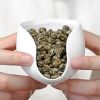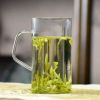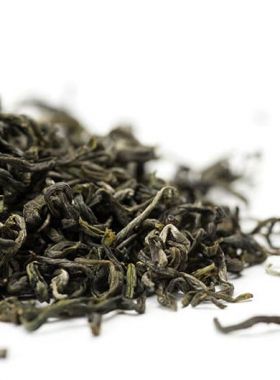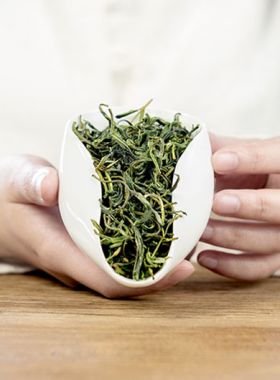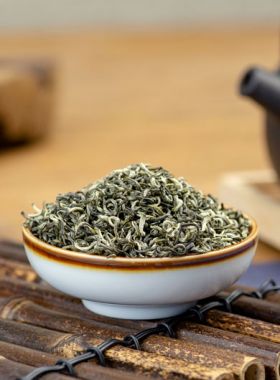-
Fast ShippingFree shipping for orders above $40
to most countries. -
Secure PaymentPay with Paypal, Credit Card …
-
Carefully SelectedFrequently Visit Tea Gardens.
Taste Repetitiously -
15 Days RefundNo Questions Asked
Refund Policy
Ming Qian Curled Long Ya Green Tea
Chestnut and flowery, sweet and rich aroma
Chestnut and flowery, sweet and rich aroma
| Origin: |
Mt. Tiangong (天宫山), Juexi Town, Yibin City, Sichuan Province, China |
|---|---|
| Harvest Time: |
March 31, 2024 |
|
Plucking Standard: |
One bud with one leaf |
| Dry leaf: |
Curled tea leaves with some white hairs, emerald green in color |
| Aroma: |
Sweet, tender chestnut aroma with slight floral fragrance |
| Liquor: |
Yellowish green |
| Taste: |
Sweet and refreshing, rich in taste, the liquid has chestnut fragrance and slight floral fragrance, which lingers in mouth after drinking |
| Tea Bush: |
Fu Xuan No. 9 (About 18 years old) |
| Tea Garden: |
Mt. Tiangong Tea Garden (about 1200m above sea level) |
| Caffeine: |
Low caffeine (less than 10% of a cup of coffee) |
| Storage: |
Store in airtight, opaque packaging; keep refrigerated |
| Shelf Life: |
18 Months |
Angel's Comment:
This curled Long Ya is a must-try for its tender chestnut and flowery scent, as well as its mellow, rich, and sweet taste.
Ming Qian refers to tea leaves picked prior to Qing Ming Day, April 4. This tea has a rich texture and stronger freshness above a chill in the taste from the early spring; overall it is slightly cold and elegant, with an amazing surging aroma and a sweet, mellow, smooth taste.
This tea in particular has flattened leaves in a needle-like shape with a fresh aroma. High-mountain leaves become tender after surviving a cold winter, and are rich in endoplasmic substances and nutrients. The leaves of this Long Ya green tea must undergo a series of complicated process (Sha Qing, ordering, shaping, drying) in order to become a high-quality drinkable product. In order to preserve the taste of the tea, during the first Sha Qing step the leaves must not be excessively kneaded, and should do so under the supervision of professional tea makers.
The pleasant sweet scent of dry leaves wafts into our noses as soon as the package is opened, together with a trace of floral notes of spring. This tea comes from the high altitudes around 1200m, so in addition to the fresh, mellow, sweet, and tender chestnut fragrance that belongs to Sichuan tea, the tea liquid also has a faint floral fragrance, which is more like the fragrance of magnolia flowers, especially at the bottom of our cup or tea pitcher, very pleasant.
 |
Cup Method |
 |
Chinese Gongfu Method |
 |
Teacup: 8.8oz / 250ml |  |
Gaiwan: 3.8oz / 110ml |
 |
176℉ / 80℃ |  |
176℉ / 80℃ |
 |
2g Tea / 2 teaspoons |  |
4g Tea |
 |
Brewing time: 2 - 5 mins |  |
7 steeps: 10s, 15s, 20s, 30s, 40s, 50s, 80s |
Mt. Tiangong Tea Garden is located in the town of Juexi in Yibin City, at an average elevation of 900-1350 meters and about 100km from the nearest city. The forest cover here is over 80%, and the soil is rich in abundant matter. Clouds and mist drift through these mountains throughout the whole year, and suitable temperature and humidity provide excellent natural conditions for the growth of tea plants and formation of natural nutritional inclusions in the leaves.
Busy picking season of Mt. Tiangong Tea Garden
Photograph by TeaVivre Member Chris
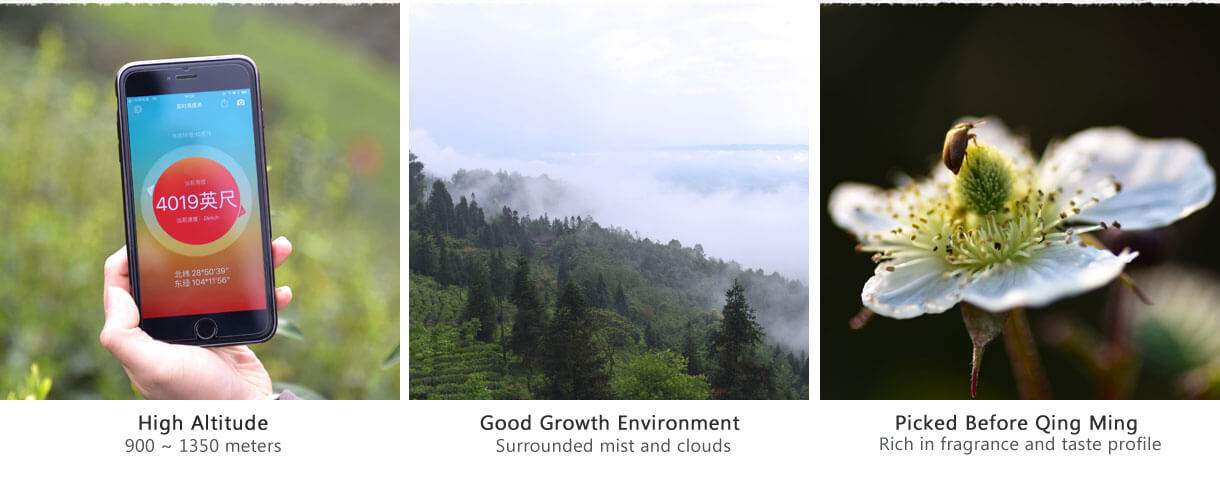
Yibin City sits at the intersection between the Jinsha, Minjian, and Yangtze Rivers. Since ancient times this location has served as a transportation hub between the mainland and the southwest, and is also an important port to move Sichuan tea to the Jiagnan region. The climate here is humid with abundant rainfall and fertile soil, suitable for healthy tea tree growth.
In the 1950s thousands of wild tea plants were discovered in the Tiangong Mountain Tea Garden and other nearby areas; the Sichuan Tea Institute identified these trees to be as old as the wild trees found in Yunnan, confirming the fact that Yibin is one of the hometowns of tea.
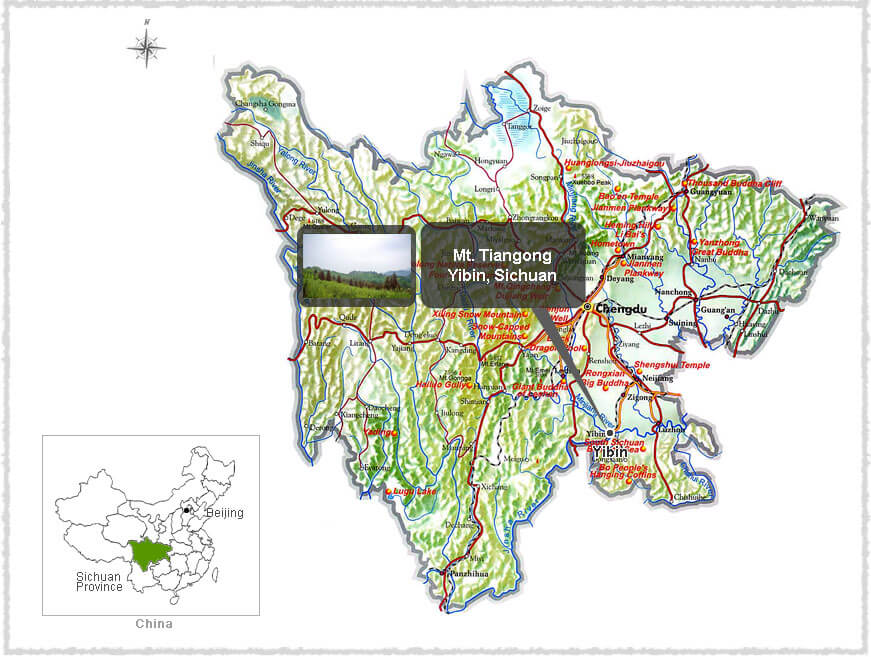
Fu Xuan No. 9, the preferred variety for making Sichuan tea. It belongs to small tree type, middle-leaf, and named after breeding from Fuding Dabaicha. Tea trees growing in Sichuan are usually picked at the beginning of March. The buds and leaves are green and neat, with strong tenderness and many hairs, which are suitable for making famous teas such as Maojian and Zhuyeqing. The composition contains 2.53% caffeine, 3% amino acids, 25.2% tea polyphenols, and 157.50 mg/g catechins.
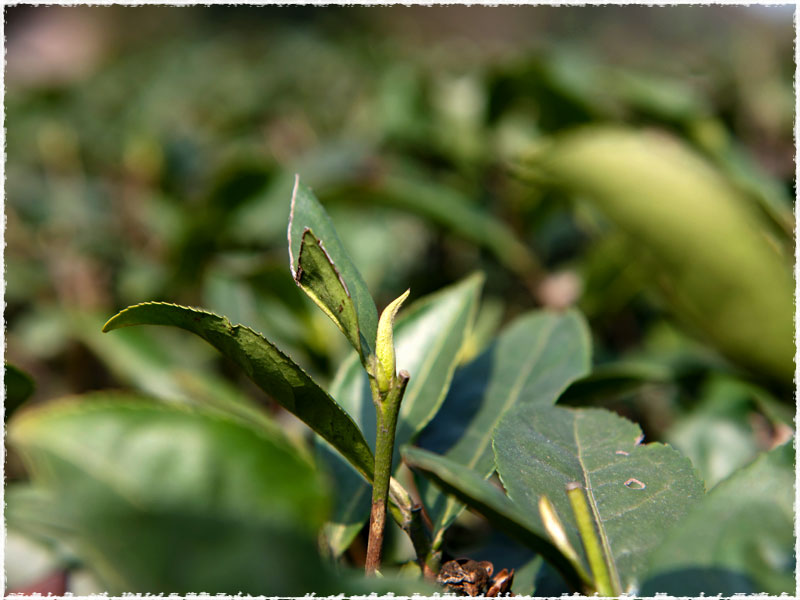
Yibin City, located in the middle south of Sichuan Province, bears the title “The First City on the Great Yangtze River”. The history of tea production here can be traced back over 3000 years, and this place is not only an important tea production for Sichuan, but also one of the first places where tea was cultivated in all of China.
According to historical records, during the prosperous Tang and Song dynasties, for Sichuan’s special geographical location the “Tea-Horse Trade” was particularly prosperous. The tea industries in Yibin were developed and expanded so that tea could be traded for horses, salt, and other daily necessities, establishing this so-called “Tea Horse Trade”.
The varieties of teas offered gradually increased, and rarer varieties such as Junlian’s yellow buds as well as other Yibin teas enjoyed a notable reputation in the market. As an important station along the Tea-Horse Road, Yibin tea spread far and wide and quickly earned its reputation.
-
5 stars13
-
4 stars5
-
3 stars0
-
2 stars0
-
1 star0



